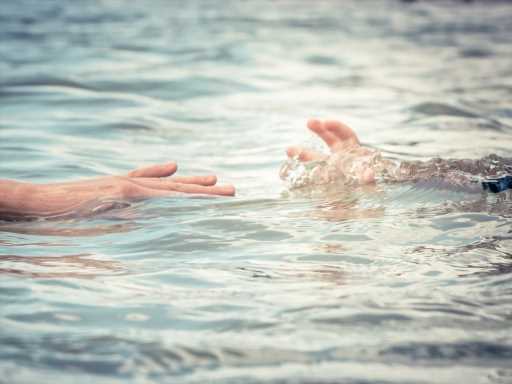The tragic drowning death of 2-year-old Arrayah Barrett, the youngest daughter of Tampa Bay Buccaneers linebacker Shaquil Barrett, is a heartbreaking reminder that pools can be a dangerous place for little ones. But as we head into swimming weather, it’s time for another crucial reminder: a swimming pool is not the only water that poses a drowning risk.
Water safety was top of mind when Kristy S. was planning her toddler daughter’s birthday party. In fact, she even rented an inflatable slide so the kids wouldn’t overcrowd the swimming pool at their Tulsa, Oklahoma, home.
During the party, Kristy happened to glance over at the slide. Her heart sank. Her daughter was lying motionless in a few inches of water at the bottom of the slide. “At first, I thought she was just playing, so I yelled over to her, but she didn’t move,” Kristy remembers. “A few more seconds passed before I realized something was really wrong, and I raced over and grabbed her. She was unconscious, so we called 911.”
It turns out, Kristy’s daughter inhaled enough water on her way down the slide to cause her to stop breathing. “The whole thing happened in a matter of just a few seconds,” she says. Another guest at the party began administering CPR and was able to resuscitate her. Still, says Kristy, “I was scared out of my mind.”
Get the facts on drowning
As Kristy discovered, drownings and non-fatal drowning events can occur quickly and without warning. Though drowning can happen at any age, children 4 and younger are particularly at risk. Toddlers can drown in as little as an inch or two of water, which means accidents can happen in places parents might not think to closely supervise. Think buckets, bathtubs, hot tubs, spas, plastic kiddie pools, toilets, and, yes, inflatable slides. (Older kids, teens, and young adults typically drown in lakes, rivers, and other natural bodies of water.)
“Seventy percent of drownings happen when it’s not time to swim, so the level of supervision is lacking,” explains Dr. Ben Hoffman, chair of the American Academy of Pediatrics’ (AAP) Council on Injury Violence and Poison Prevention. “A child can drown in 20-30 seconds, roughly the time it takes to open a bag of chips.”
Practice water safety
As scary as the statistics are, the good news is that you can take steps to help lower your child’s risk of drowning. Proper supervision around water is key. Experts recommend the following:
- Designate a water watcher who can constantly monitor the pool and any other water-related activities. Enlist the help of multiple adults to take on shifts.
- Put away your cell phone and eliminate other distractions when your child is in or near water.
- Save the alcoholic drinks until after the kids have dried off. Even one glass can impair your judgment.
- Never leave a baby under 1 year of age unattended in a bath.
- If you haven’t taken one yet, sign up for a cardiopulmonary resuscitation (CPR) class. Knowing how to save someone’s life is a good skill to have all year round.
In addition to supervision, there are preventive measures you can take to help keep children safe. Dr. Hoffman recommends putting up multiple barriers to prevent children from being able to access the water on their own. If you have younger children, empty anything that contains water, such as a birdbath, bucket, or kiddie pool, when not in use, and place a lock on the toilets. You should also sign up your child for swimming lessons if you haven’t already.
Be prepared to adjust your water protection plan as your child gets older. “There’s not going to be a one-size-fits-all [solution],” Dr. Hoffman says. “The safety strategies you employ for a toddler may not be the same you use for an older child. Each child is different, so knowing your individual child’s developmental status, age, how they are wired, and how inclined they are to take risks will help you determine how to best keep them safe.”
What to do if someone is drowning
Even with the best preventive measures in place, accidents can happen. In the event of a drowning, every second counts, so take immediate action. The American Red Cross advises you to:
- Shout for help.
- Rescue and remove the person from the water (without putting yourself in danger).
- Ask someone to call 911. If you’re alone, give the drowning victim two minutes of care, then call for help.
- Begin rescue breathing and CPR.
- Use an automated external defibrillator, if one is available, and transfer care to advanced life support, if possible.
If the drowning victim had to be resuscitated, be sure they go to the hospital for evaluation and monitoring — even if they appear alert and are able to breathe on their own, according to the AAP. Kristy’s daughter, for example, had residual water on her lungs and had to stay in the hospital overnight for treatment and monitoring.
Today, the little girl is a healthy, vivacious 7-year-old. And Kristy learned the importance of being vigilant around water. “It was such a tiny amount of water [on the slide], so never in my wildest dreams could I imagine my daughter drowning in it,” she says.
A version of this post was originally published in 2021.
Source: Read Full Article

